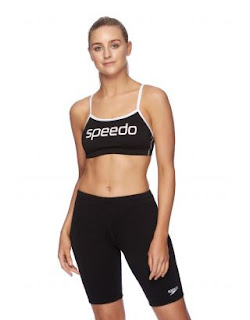Top Tips on Choosing the Best Wetsuit in 2022
Swimming wetsuits are necessary whether you're a surfer at practically any break outside of the tropics, a triathlete swimming in open water, or a paddler looking for an added measure of safety. The thermal barrier that wetsuits generate by retaining a thin layer of water adjacent to your skin as your body warms it keeps you warm in cold or chilly water.
If you enjoy spending time in the water but don't live in a tropical area, a wetsuit is essential for several water sports. Choosing best triathlon wetsuits can initially appear difficult because there are so many options available nowadays. Although the variety of choices and viewpoints available may seem daunting, by carefully considering the following factors, you may choose the perfect wetsuit:
What Are You Planning To Do With It?
Your choice of wetsuit will depend on the kind of activities you intend to engage in with it. One of the simpler types will be more than suitable for your time in the water if you're a novice surfer or recreational wakeboarder, for instance. However, if you want to graduate to higher levels, an advanced performance wetsuit will give you the extra warmth, flexibility, and durability you need.
How Chilly Will The Surroundings Be When You Wear This Wetsuit?
This is significant. Each style of wetsuit is meant to insulate against a specific water temperature. The requirement for a thicker wetsuit increases as the temperature of the air and water drops. A full-length wetsuit (or steamer) will typically be needed if the weather is chilly.
What Is Your Spending Limit?
Purchasing a less costly type won't necessarily prevent you from staying warm in the water, but it probably won't be as flexible or light as a more expensive model. A base model will surely keep you warm enough and fit your needs if you're a casual swimmer who will only use the wetsuit occasionally and are cost-conscious.
Wetsuit Material
Neoprene
A type of synthetic rubber called neoprene is used in almost all wetsuits especially in Triathlon wetsuits Australia. Neoprene comes in different forms, and some are better than others in terms of flexibility, water absorption, and total weight.
Thicknesses Of Wetsuits
The most significant predictor of a wetsuit's warmth is frequently how thick the neoprene is.
Millimetres are used to measure neoprene material. Wetsuits can have a thickness of 0.5 mm for warm water situations, 5 mm for winter surfing, or even 7 mm or more for diving.
The thicknesses that are most frequently used are 2mm, 3/2mm, 4mm, and 5mm. Different thicknesses in various wetsuit zones are referred to as a mix of thicknesses. 4/3mm is equal to 3mm in the arms and legs and 4mm in the core. The thickness around the wetsuit's centre is always represented by the first number.
Back Zip Versus Chest Zip Wetsuits
It can be challenging to decide between orca wetsuits sydney with a chest zip and one with a back zip. Wetsuits with back zips are the most popular and an excellent choice for people who have had shoulder issues in the past. Although a chest zip can be more challenging to open and close, they often maintain a tighter seal at the collar line, making it more difficult for water to seep through the neck and wet the suit.
It's acceptable if you prefer a back zip over a chest zip because the performance difference isn't that great and some people find the convenience of access provided by the rear zip to be much more advantageous.
This is it, as easy! Just focus on the above mentioned points and get the best wetsuit for yourself!
Visit for more information, https://www.swimwearshack.com.au/





Comments
Post a Comment